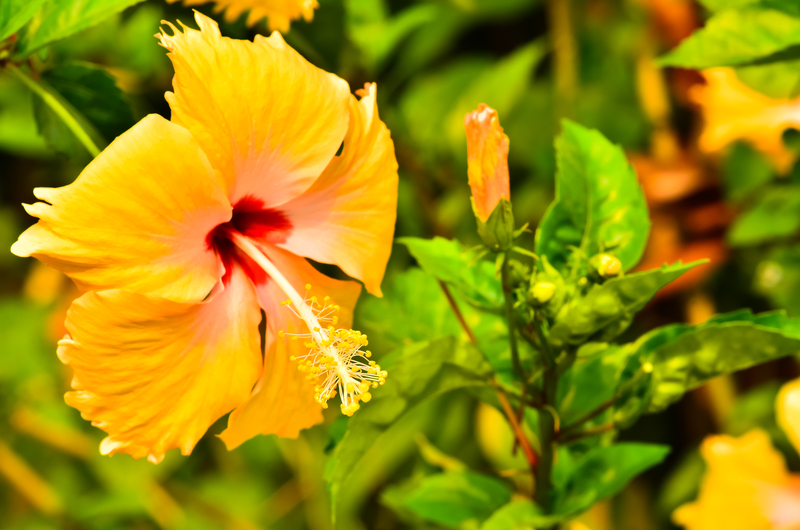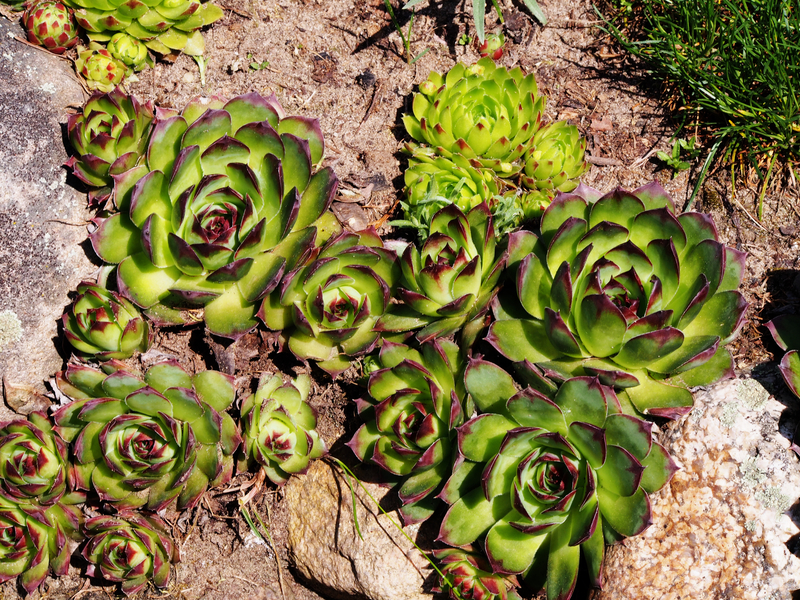Explore 5 Simple Tricks for a Budget-Friendly Low Maintenance Garden
Posted on 31/05/2025
Explore 5 Simple Tricks for a Budget-Friendly Low Maintenance Garden
Gardening doesn't have to be expensive, time-consuming, or labor-intensive. Creating a budget-friendly low maintenance garden is not only possible, but it also allows you to enjoy a lush, beautiful outdoor space without endless hours of work or breaking the bank. Whether you're a beginner or an experienced gardener looking to cut back on time and costs, these simple tricks will help you design an attractive, sustainable, and easy-to-care-for garden.

Why Choose a Low Maintenance Budget Garden?
High-maintenance gardens often require significant financial investment and a regular influx of time. Between watering, fertilizing, mowing, and pruning, it can feel like a second full-time job! Low maintenance gardening, on the other hand, allows you to enjoy nature's beauty without sacrificing your weekends or wallet. Here are just a few benefits of embracing an affordable, low effort garden:
- Save Money: Less need for expensive plants, landscaping, fertilizers, and equipment.
- Save Time: Spend more time relaxing and less time weeding, watering, and mowing.
- Sustainability: Eco-friendly gardens require fewer resources and can support local biodiversity.
- Stress Relief: Gardening is more enjoyable when it isn't a source of stress.
1. Choose Hardy, Drought-Resistant Plants
Plant Selection: The Heart of a Low Maintenance, Affordable Garden
The first and most important trick in creating a budget-friendly low maintenance garden is selecting the right plants. By opting for hardy, drought-resistant species, you'll minimize the need for watering, fertilizing, and replacing dead plants. Native plants are especially advantageous because they're adapted to your local climate and typically require less care.
Popular Plants for Low Maintenance Gardens
- Lavender: Needs minimal water, tolerates poor soil, and attracts pollinators.
- Daylilies: Excellent for blooms with little care and survivability in diverse conditions.
- Sedum: Robust, drought-tolerant succulents for groundcover or borders.
- Russian Sage: Durable and visually striking with long-lived flowers.
- Grasses (e.g., Blue Fescue, Feather Reed): Require minimal mowing and maintenance.
Tip: Visit local plant nurseries and look for labels like "drought tolerant," "hardy," or "native." Ask staff for advice - they often know which plants thrive in your region with minimal effort.
2. Mulch Mulch Mulch: The Ultimate Labor & Money Saver
How Mulching Transforms Your Garden
A simple, often overlooked trick to a low cost low maintenance garden is using mulch. Mulch helps retain soil moisture, suppresses weeds, improves soil health, and reduces how much you need to water and weed. This means less money spent on water and chemicals, and less time spent kneeling in the dirt!
Types of Budget-Friendly Mulch
- Wood chips or bark: Often available for free or cheaply from local landscaping suppliers or tree-trimming services.
- Grass clippings: Free and easy to apply, just make sure they're dry and seed-free.
- Leaf mold: Fallen leaves decomposed into rich mulch - nature's free resource!
- Gravel or stones: While a bigger upfront investment, they last indefinitely and work well in drought-tolerant gardens.
Apply a thick layer (2-3 inches) of mulch around your plants and in empty beds for best results. Top up annually for ongoing benefits.
3. Embrace Perennials over Annuals
Why Perennials Are Perfect for an Inexpensive, Easy Garden
While annuals lure gardeners with their seasonal blooms, they die back each year, meaning you'll need to plant (and pay for) new ones regularly. Perennials, on the other hand, come back year after year with minimal care, saving both money and effort over time. They're the secret to a truly self-sustaining, low cost garden!
Favorite Budget-Friendly Perennials
- Hostas: Lush, shade-loving, and nearly indestructible.
- Black-Eyed Susans: Cheerful yellow flowers that attract pollinators.
- Coneflowers (Echinacea): Hardy flowering perennials ideal for borders.
- Mountain Bluet (Centaurea): Drought resistant and easy to divide, share, or spread.
- Daylilies & Sedums: Already mentioned, but worth repeating for their resilience and beauty!
Bonus Tip: Host seed swaps with friends, propagate perennials by division, or shop end-of-season plant sales for maximum savings!
4. Swap Lawns for Groundcovers and Pathways
Low Maintenance Lawn Alternatives Save Time and Money
Traditional grass lawns often demand constant mowing, watering, feeding, and weeding. Swapping even part of your lawn for groundcovers or attractive gravel pathways can drastically reduce maintenance. You'll spend less on water, fuel, and lawn-care products - and more time enjoying your garden!
Excellent Low Maintenance Groundcovers
- Creeping thyme: Aromatic, drought-tolerant, and walkable.
- Clover: Stays green, fixes nitrogen in soil, and rarely needs mowing.
- Moss: Perfect for shady, moist spots - zero mowing required.
- Bishop's Weed, Pachysandra, or Vinca Minor: Spreads quickly and covers bare soil with minimal intervention.
Gravel and Pathways
- Use inexpensive gravel or stepping stones to create walking paths that require virtually no upkeep.
- Combine paths with groupings of pots or drought-tolerant flower beds for visual interest.
Tip: For even more savings, look for reclaimed pavers, bricks, or stone at local reuse centers.
5. Install Smart, Efficient Watering Solutions
Watering Wisely: Reduce Waste and Effort
One of the most challenging aspects of garden maintenance on a budget is watering. Overwatering leads to runoff and higher bills, while underwatering means stressed, unhealthy plants. The solution? Install simple, efficient irrigation systems and use rainwater wherever possible.
Easy, Affordable Watering Strategies
- Soaker hoses: Deliver water directly to roots with minimal evaporation or waste.
- Drip irrigation kits: DIY drip systems can be installed for less than the cost of monthly water bills.
- Rain barrels: Collect free rainwater from gutters to use during dry spells.
- Water in early mornings or evenings: Decreases evaporation, making every drop count.
Mulch and drought-tolerant plants go hand-in-hand with smart watering to create a truly low maintenance, inexpensive garden.
Bonus Tips for an Effortless & Affordable Outdoor Space
- Group plants by water needs: Keep thirsty plants together, making it easier to avoid over- or under-watering.
- Use raised beds or containers: Control soil quality, reduce weeds, and make gardening accessible for all mobility levels.
- Plant in drifts and clusters: Reduces weeding, conserves moisture, and creates a more cohesive design.
- Invest in quality tools: One-time purchase of sturdy tools saves money in the long run.
- Leave some wild corners: Allowing a corner of your garden to grow semi-wild supports biodiversity and requires no maintenance at all!

Frequently Asked Questions: Budget-Friendly Low Maintenance Gardens
What are the best low maintenance plants for small gardens?
Look for compact perennials, dwarf shrubs, and groundcovers like sedum, thyme, hostas, and dwarf grasses. These provide year-round interest and require little care.
How can I reduce garden maintenance costs even more?
Propagate your own plants, trade seeds or cuttings, choose manual (not powered) tools, collect rainwater, and use recycled or upcycled materials in landscaping.
Is it possible to have a beautiful garden with almost no work?
Absolutely! By choosing the right plants, mulching, and designing with maintenance in mind, you can create a stunning and welcoming garden that's easy on your time and your wallet.
Conclusion: Enjoy Your Easy, Affordable Garden Oasis
With a little planning and these 5 simple tricks for a budget-friendly low maintenance garden, you'll transform your outdoor space into a serene, stress-free retreat. Focus on tough, climate-appropriate plants, embrace the power of mulch, prioritize perennials, swap out labor-intensive lawns, and water wisely to maximize beauty, relaxation, and savings in your garden.
Gardening should enhance your life, not complicate it! Use these tips to create a sustainable, affordable garden that brings year-round joy and minimal fuss. Happy gardening!

